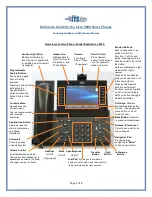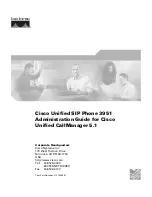
4. This unit requires rechargeable Ni-MH
batteries. Do not use alkaline batteries.
5. Clean the charge points with a dry cloth from
time to time.
6. Ringer Equivalence Number (REN)-1.0.
The REN is a customer guide indicating
approximately the maximum number of
items of apparatus that should be
connected simultaneously to the line. The
sum of REN’s of the individual items should
not exceed a total value of 4.
7. You can use this equipment to make 999,
112 emergency calls.
8. You can use this equipment on a
telecommunication system that uses Loop
Disconnect or DTMF signalling.
It is strongly recommended that the
equipment is configured to use DTMF
signalling for access to public or private
emergency services. DTMF signalling also
provides faster call setup.
9. If you are connected to a Private Branch
Exchange, you may have to press a digit, for
example “9”, to get an outside line. Then
you dial as normal. If you need a pause, you
should insert it after the digit and before the
number you require.
10. You may sometimes experience problems in
making calls. These difficulties can include:
• Line connection problems.
• Problems hearing the conversation on
both ends of the line.
11. This equipment will NOT work at all if the
mains or battery supply is removed.
12. You can connect the equipment to the
telecommunication systems specified as
long as you follow the instructions in this
manual.
13. This equipment has been approved for use
with the following facilities:
• Last Number Redial.
• Call Barring.
• Memory Dial.
Any other use will invalidate the approval
of the equipment and it then ceases to
comply with the standards against which
approval was granted.
14. SAVE THESE INSTRUCTIONS.
When using your telephone, these basic safety
precautions should always be followed to
reduce risk of fire, electric shock, and injury.
1. Never push objects of any kind into your
telephone through case or cabinet openings.
They may touch dangerous voltage points
resulting in risk of fire or shock.
2. To reduce the risk of electric shock, do not
disassemble your telephone. Take it to a
qualified service technician when repair work
is required. Opening or removing covers may
expose you to dangerous voltage or other
risks. Incorrect reassembly could cause
electric shock when the unit is subsequently
used.
3. Unplug this unit from the telephone jack and
wall outlet, and refer servicing to qualified
service personnel under the following
conditions:
• When the power supply cord, plug, or
adaptor is damaged or frayed.
• If liquid has been spilled into the product.
• If the product has been exposed to rain or
water.
• If the product does not operate properly
after instructions have been followed.
• If the product has been dropped, or the
cabinet appears damaged.
• If the product exhibits a distinct change in
performance.
4. Avoid using your telephone during a
lightning storm. There may be a remote risk
of electric shock from lightning. If possible,
unplug the AC adaptor and telephone cord
for the duration of the lightning storm.
5. Never dispose of batteries in a fire. There is
a serious risk of explosion and / or the
release of highly toxic chemicals. Dispose of
used batteries in accordance with local
regulations.
Important Notices
1. When going on holiday or not using the
phone for a long period of time, please
disconnect the mains power from the base
and remove the battery from the handset.
2. If the handset is not used for a long time
and the battery becomes fully discharged,
please recharge the handset for a minimum
of 10 hours before using again.
3. If the battery is self-discharged because it
has not been used, the operational life of the
battery may be reduced. To recover the full
storage capacity of the battery, recharge the
battery for a minimum of 10 hours and use
until it is fully discharged. This process needs
to be repeated several times.
Safety Precautions
2
3



































